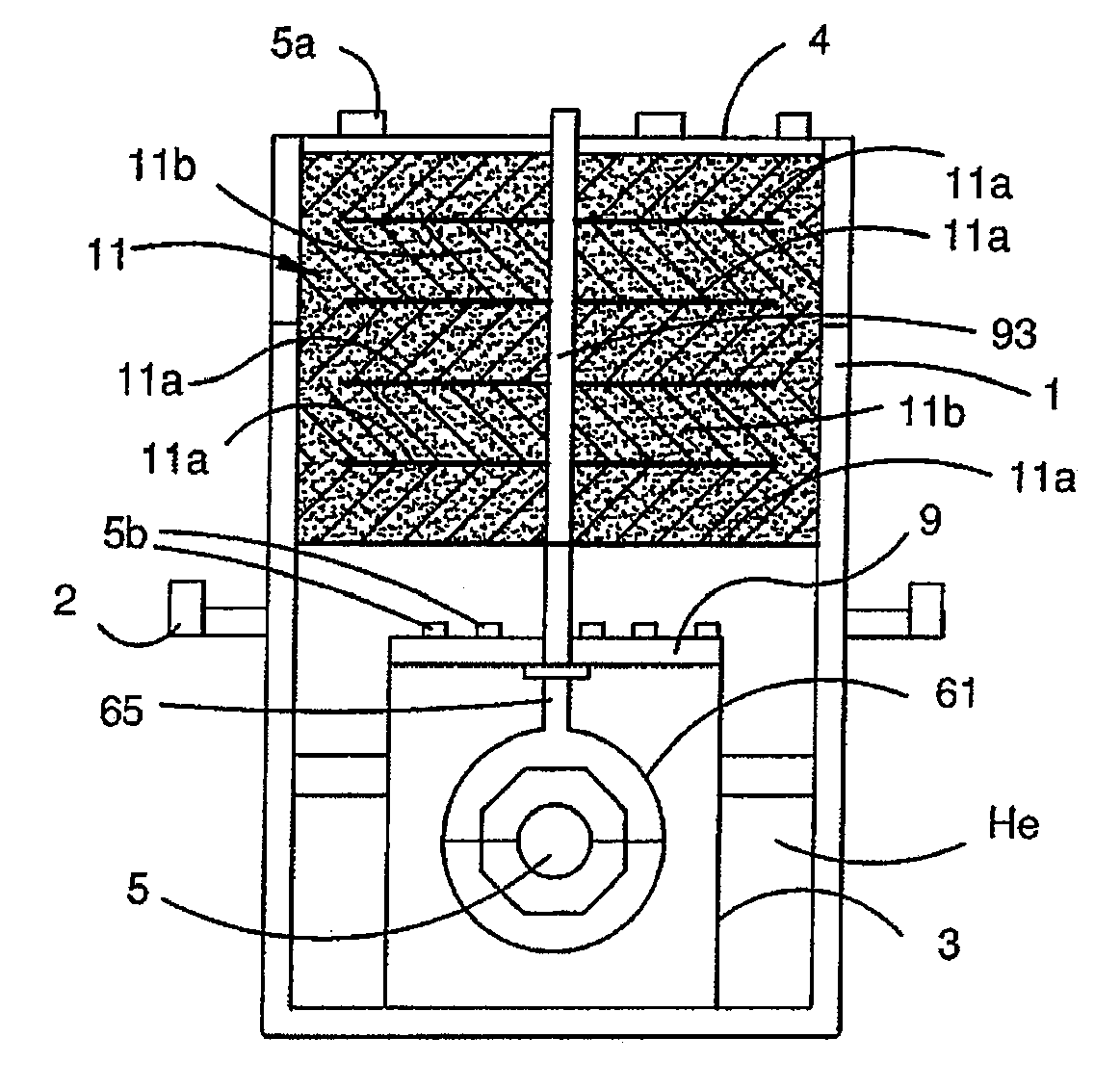Gravity Gradiometer
a gravity gradient and gradiometer technology, applied in the field of gravity gradients, can solve the problems of noise or swamping actual acceleration, inaccurate actual gravity gradient measurements, frequency response of accelerometers not being matched, etc., and achieve the effect of spa
- Summary
- Abstract
- Description
- Claims
- Application Information
AI Technical Summary
Benefits of technology
Problems solved by technology
Method used
Image
Examples
Embodiment Construction
[0079]FIG. 1 is a schematic view of a gravity gradiometer according to one embodiment of the invention.
[0080]The gradiometer shown in FIG. 1 comprises a double walled Dewar 1 which is supported in an external platform 2. The external platform 2 enables adjustment of the Dewar and therefore the contents of the Dewar about three orthogonal axes. The external platform 2 is generally known and its adjustment by suitable motors or the like is also known. Thus, a detailed description will not be provided.
[0081]A vacuum canister 3 is provided in the Dewar and the Dewar is supplied with liquid gas such as liquid helium He so that the gradiometer can operate at cryogenic temperature. The Dewar 1 is closed by an end plate 4 which includes connectors 5a for connecting electrical leads (not shown) to external components (not shown).
[0082]The canister 3 is closed by an end plate 9 which includes connectors 5b for connecting electric leads (not shown) to the connectors 5a. The gradiometer has a m...
PUM
 Login to View More
Login to View More Abstract
Description
Claims
Application Information
 Login to View More
Login to View More - R&D
- Intellectual Property
- Life Sciences
- Materials
- Tech Scout
- Unparalleled Data Quality
- Higher Quality Content
- 60% Fewer Hallucinations
Browse by: Latest US Patents, China's latest patents, Technical Efficacy Thesaurus, Application Domain, Technology Topic, Popular Technical Reports.
© 2025 PatSnap. All rights reserved.Legal|Privacy policy|Modern Slavery Act Transparency Statement|Sitemap|About US| Contact US: help@patsnap.com



